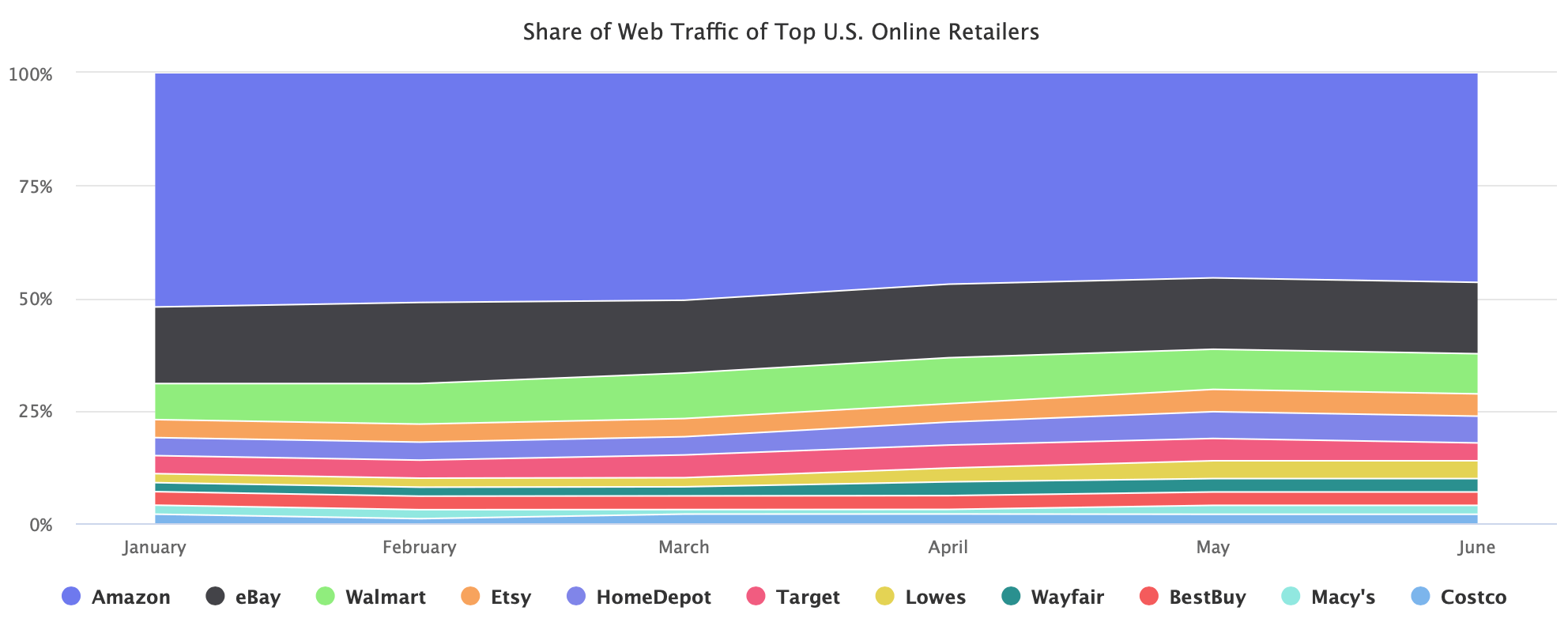Amazon lost some market share, as measured by web traffic, to the next ten biggest online retail rivals: down from 52% in January to 47% in June. Yet, as the pandemic brought accelerated e-commerce adoption, top players remained the same.
Some have feared that during the pandemic, the e-commerce market will be winner-take-all, mostly benefitting Amazon due to its unmatched fulfillment capacity. The opposite happened - Amazon had to delay non-essential items’ delivery because of the breakdown of that same fulfillment. The company resumed two-day delivery for most items by mid-May, however, that created an opening for its competitors to step in (none of which did the essentials prioritization).

In April, while Wayfair’s and Lowe’s web traffic compared to March grew at roughly 50%, Amazon’s grew considerably slower at 8%. However, in June, as more people returned to physical stores, Amazon’s traffic shrank only 5% relative to May, compared to the more than 10% decline of Wayfair, BestBuy, Costco, and Target. Web traffic estimates are by SimilarWeb.
Comparing traffic in February to traffic in May - usually the slowest month of the year to the peak this year so far - Lowe’s, The Home Depot, Wayfair, Costco, and Target grew the most. Meanwhile, Amazon and eBay grew the least. In total numbers, Amazon is as big as the next ten combined, and that’s why its market share only changed by a few percentage points. Amazon’s fulfillment struggles hampered its ability to capitalize on the e-commerce demand increase, but not by enough to be meaningful long-term.
| Website | February | March | April | May | June |
|---|---|---|---|---|---|
| Amazon | -13% | 9% | 8% | 6% | -5% |
| eBay | -9% | 4% | 12% | 5% | -6% |
| Walmart | -4% | 32% | 18% | -4% | -9% |
| Etsy | -7% | -7% | 40% | 13% | -7% |
| The Home Depot | -5% | 25% | 41% | 19% | -7% |
| Target | -9% | 37% | 26% | 1% | -17% |
| Lowe's | -7% | 27% | 47% | 24% | -7% |
| Wayfair | -17% | 12% | 56% | 18% | -12% |
| Best Buy | -12% | 15% | 28% | 6% | -13% |
| Macy's | -4% | -23% | 9% | 21% | 18% |
| Costco | -14% | 73% | 24% | -10% | -13% |
| TOTAL | -11% | 11% | 15% | 7% | -7% |
None of the competitors saw exceptional growth, but a few added one percentage point to their market share. That was enough to reduce Amazon’s, which didn’t exhibit significant growth but also didn’t lose much traffic once some people returned to stores. Ultimately, they collectively took retail market share from brick-and-mortar retailers.

